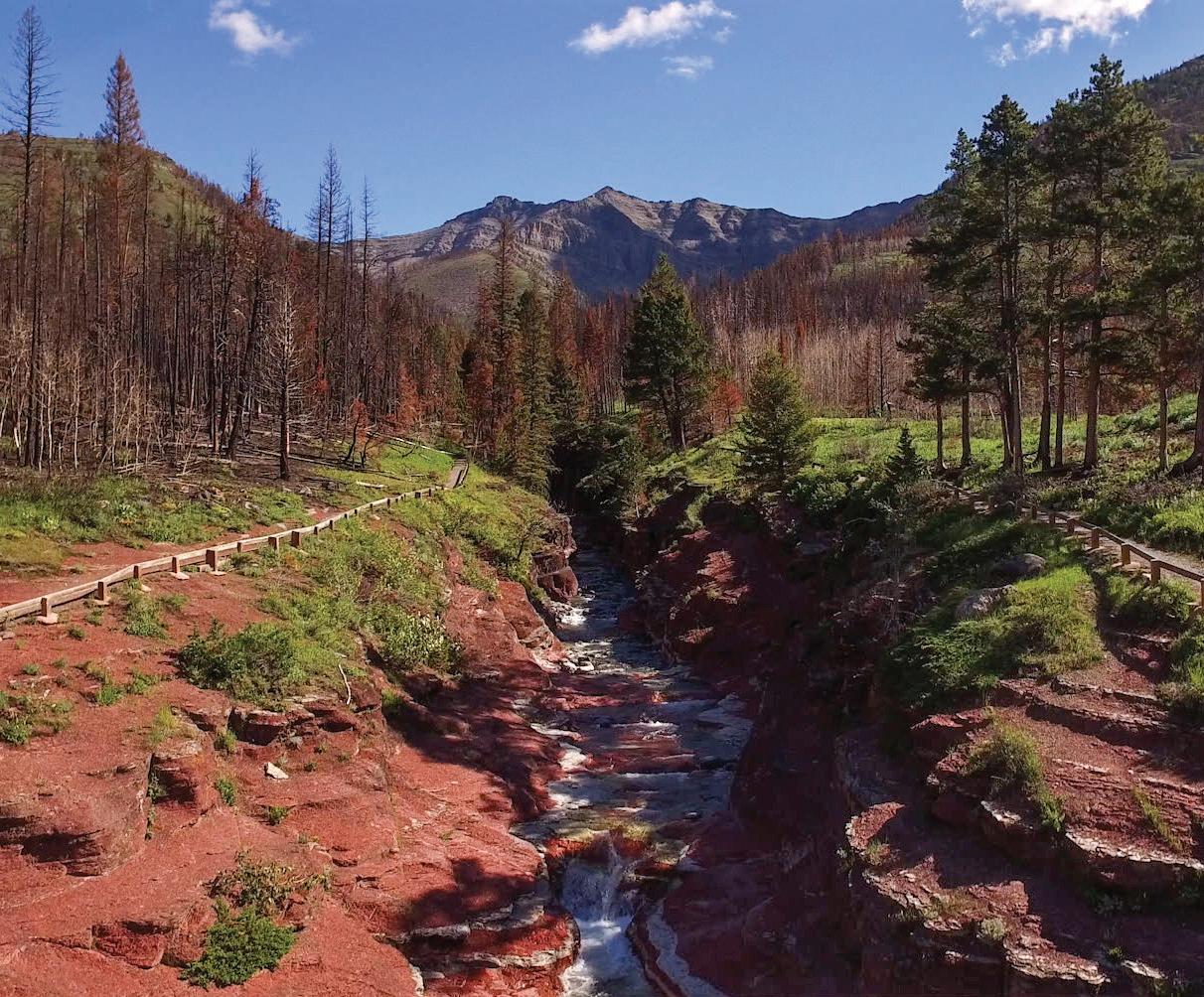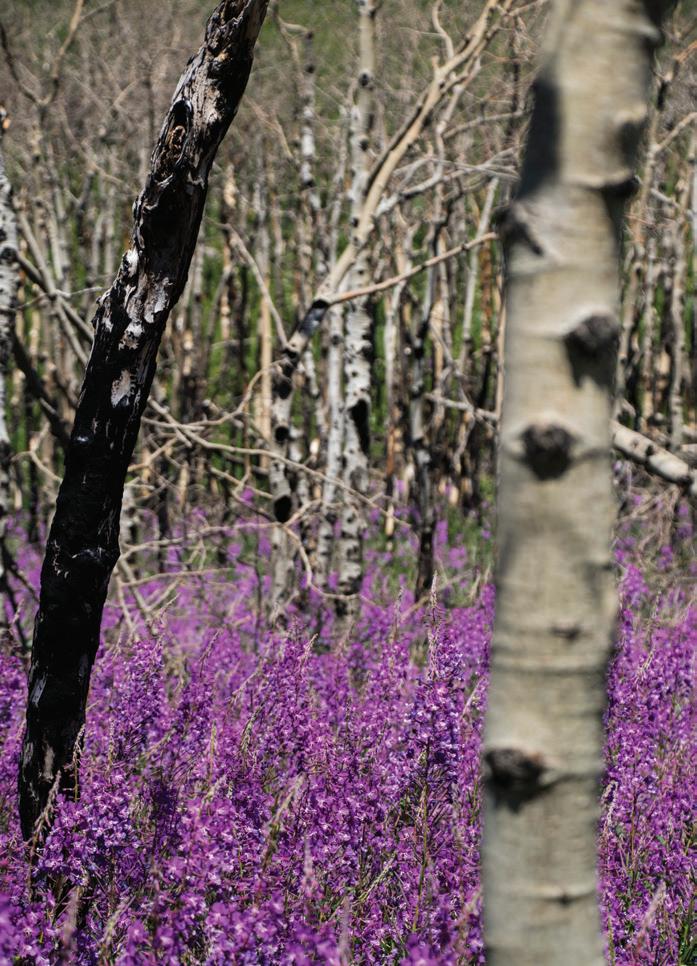
3 minute read
Waterton's Renewal
Witnessing ecological renewal in Waterton Lakes National Park

Red Rock Canyon June 2018
©Parks Canada
Advertisement
A unique opportunity for park visitors, staff and scientists to see a landscape adapt after major natural change
Influences big and small shape Waterton Lakes National Park’s unique landscape. Ice ages and glaciers, floods, avalanches and fires, Pacific and Arctic weather systems, and a high diversity of plants, wildlife and people have had sway over this place. The 2017 Kenow Wildfire burned 35,000 hectares total, including 19,303 hectares in this national park. Of that, a portion of Waterton park’s vegetated area burned with high or very high intensity causing serious ecological changes.

Red Rock Canyon Sep 2017
©Parks Canada
In a very high severity burn, no tree canopy remains, and the forest has been replaced by blackened tree trunks. The seed bank in the soil may be largely destroyed. Wildlife were also heavily impacted. Nevertheless, Waterton’s landscape has evolved with and adapted to wildfire, and nature is resilient to disturbances. Forests that may appear destroyed or lifeless are very much alive and provide a canvas for renewal. Kenow was not the first wildfire in Waterton.

Photo Courtesy of Parks Canada
While it will take time, ecological renewal is already taking place! We use this term, “ecological renewal” specifically, as the vegetation communities that establish in burned areas may look different from before. Signs of resilience appeared within days of the ground cooling in the form of grass shoots and healthy wildlife. A great deal of green and other colours flourished at lower elevations in the form of stunning fields of grasses and wildflowers in spring and summer 2018.

Photo Courtesy of E. Jagielski
Wildfires change the growing conditions in a forest. More sunlight reaches the forest floor and the soil chemistry is changed in ways that suit specific plants.
Also, lodgepole pine cones are specially adapted to open in the heat of a wildfire, releasing seeds that will grow in the bright sun and exposed soil of a burned forest. Lodgepole pine seedlings are thriving in some areas of the post-wildfire landscape.

Bertha Lake Trail with Hiker
Photo Courtesy of Parks Canada
For the most part, Parks Canada’s approach to ecological renewal is “nature will take its course”, which is consistent with advice from external experts. In some instances, action is required, such as to prevent or control the spread of non-native plants that can thrive in burned areas. Parks Canada calls for visitors to help protect the park from non-native plants. Visitors are encouraged to clean any hitchhiking seeds off of their boots before entering vulnerable burned areas. Boot cleaners are available at trail heads.
Fortunately, Parks Canada collected a great deal of ecological inventory and monitoring data within Waterton Lakes National Park prior to the wildfire. As resampling continues, some surprising observations have emerged. For example, aerial insectivores such as flycatchers and bats are present even in the most severely burned areas. In addition our vegetation specialists have found an abundance of previously uncommon plants growing in burned areas. As ecological renewal continues, it’s a great reminder to…

Photo Courtesy of Parks Canada
For more info on Waterton Lakes National Park following the Kenow Wildfire visit: parkscanada.ca/waterton










